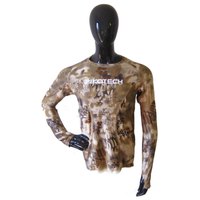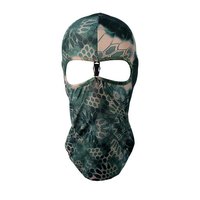Suits and complements Wetsuit skins
()Sort by
-

Pikotech Cryptik Rock Rash Guard
44.49 €
-

Salvimar Rashguard Abyss Suit
113.49 €
-

Pikotech Cryptik Sand Rash Guard
39.99 €
-

Picasso Camo Ocean Lycra Suit
97.99 €
-

Pikotech Cryptik Morph Shoulder Patch
45.99 €
-

Pikotech Cryptik Hood
22.99 €
-

Mares Pro Photo Suit
179.49 €
-

Omer Mimetic 3D Camouflage Elastan Bermudas Trousers
9.99 €
-

Pikotech Cryptik Posidonia Shoulder Patch
58.99 €
-

Pikotech Cryptik Posidonia Hood
68.99 €
-

Pikotech Cryptik Morph Hood
52.99 €
-

Pikotech Cryptik Posidonia Hood
69.99 €
What is the difference between dive skin and a wetsuit?
Dive skins and wetsuits are both garments commonly used in water activities, but they have distinct characteristics and purposes. Here are the differences between dive skins and wetsuits:Dive Skin:
A dive skin, also known as a rash guard, is a thin, form fitting garment typically made of Lycra or other stretchable synthetic materials. Here are its key features:
Dive skins are made from lightweight and breathable materials that provide a tight, second skin like fit. They offer minimal insulation and are primarily designed for protection against stings, abrasions, and sunburn rather than thermal insulation.
Dive skins provide a barrier between the skin and external elements such as the sun, jellyfish, or minor abrasions. They offer protection against UV rays and can help prevent irritation caused by contact with marine life or rough surfaces.
Dive skins are comfortable to wear and allow for a full range of motion. They are designed to be snug fitting but not restrictive, providing flexibility and freedom of movement during water activities.
Dive skins dry quickly, making them suitable for activities where frequent water contact is expected. Their lightweight nature facilitates rapid moisture evaporation, keeping the wearer relatively dry.
Wetsuit:
A wetsuit is a thicker garment typically made of neoprene, a synthetic rubber like material. It is designed to provide thermal insulation in colder water environments. Here are its key features:
Wetsuits are designed to trap a thin layer of water between the skin and the suit. The body heat warms this layer, providing insulation against the colder water outside. This insulation helps to maintain body temperature during extended periods in water.
Wetsuits are made of neoprene, a material that offers excellent insulation properties. They are available in different thicknesses, typically ranging from 2mm to 7mm. Thicker wetsuits provide more insulation but may limit mobility.
Wetsuits provide some protection against minor cuts, abrasions, and stings from marine life or rough surfaces. The neoprene material acts as a barrier and reduces direct contact with external elements.
Wetsuits provide a degree of buoyancy due to the trapped water layer. This can aid in floatation and reduce the need for additional buoyancy devices.
Wetsuits are designed to allow a small amount of water to enter, which is then trapped and warmed by body heat. This water layer is essential for insulation and is often referred to as the wetsuits "wet" component.
In summary, dive skins primarily offer protection against sunburn, stings, and minor abrasions while providing minimal thermal insulation. Wetsuits, on the other hand, focus on thermal insulation in colder water and provide additional buoyancy. The choice between a dive skin and a wetsuit depends on factors such as water temperature, desired insulation level, and the specific activities being undertaken. The brands that offer dive skins and wetsuits are Mares, Salvimar, Beuchat, Omer, and Picasso.

























